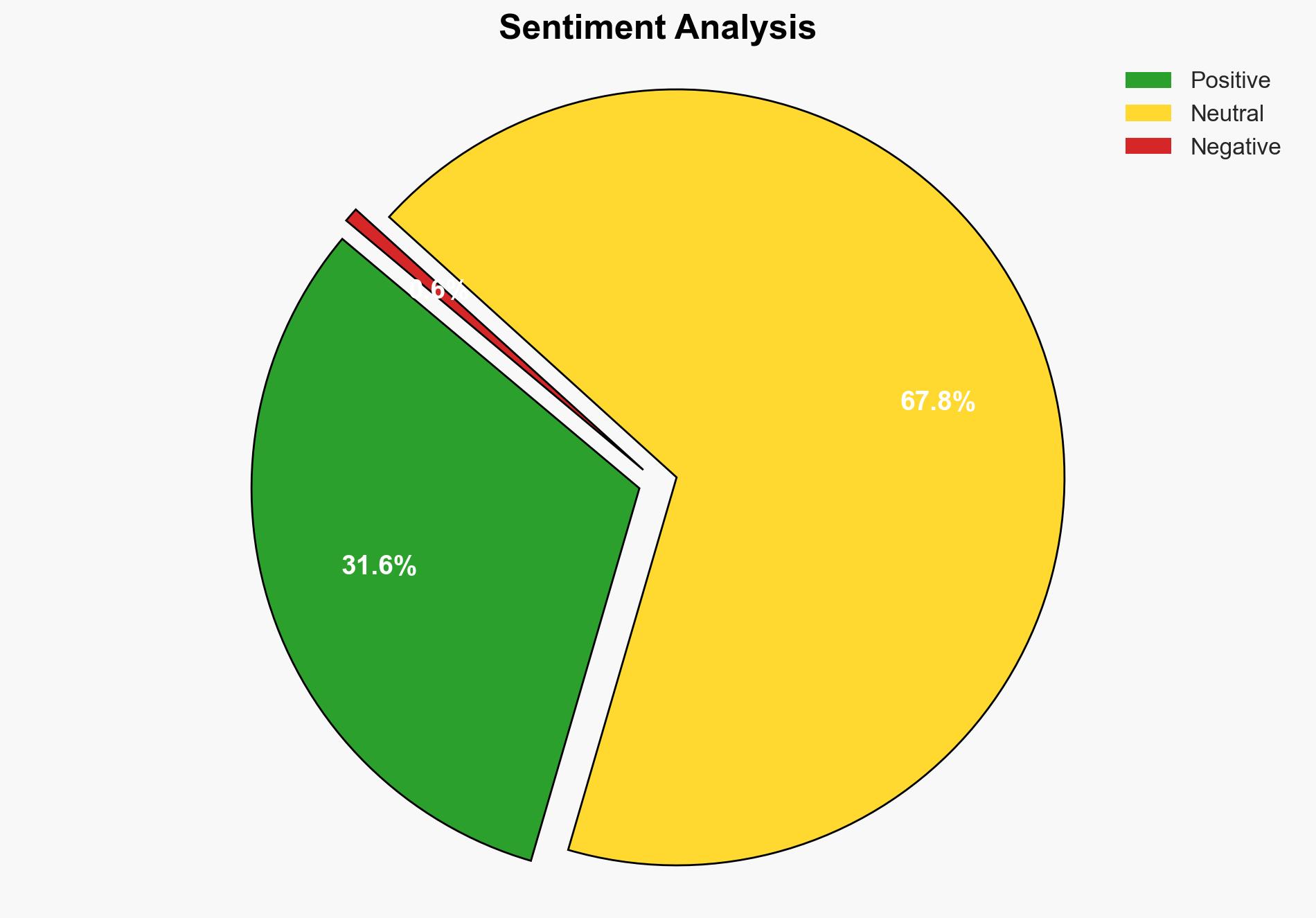Navigating The Web Of Agency Authority With AI By Patrick A McLaughlin Mitchell Scacchi – Hoover.org
Published on: 2025-11-19
AI-powered OSINT brief from verified open sources. Automated NLP signal extraction with human verification. See our Methodology and Why WorldWideWatchers.
Intelligence Report: Navigating The Web Of Agency Authority With AI
1. BLUF (Bottom Line Up Front)
With a moderate confidence level, the most supported hypothesis is that the Hoover Institution is strategically positioning itself as a leading think tank in AI policy development, leveraging its historical influence and scholarly excellence. Recommended action includes monitoring Hoover’s policy outputs and collaborations for potential impacts on national AI strategies.
2. Competing Hypotheses
Hypothesis 1: The Hoover Institution is enhancing its role in AI policy to influence U.S. national security and economic strategies by leveraging AI advancements.
Hypothesis 2: The Hoover Institution’s focus on AI is primarily academic, aiming to expand its research portfolio without a direct intention to influence policy.
Hypothesis 1 is more likely due to Hoover’s historical involvement in policy-making and its strategic positioning as a policy-generating entity. The emphasis on public policy and national security in the source text supports this.
3. Key Assumptions and Red Flags
Assumptions: It is assumed that Hoover’s historical influence will continue to translate into policy impact. The institution’s stated mission aligns with national security interests.
Red Flags: Potential bias in interpreting Hoover’s intentions due to its historical reputation. Lack of direct evidence linking current AI initiatives to specific policy outcomes.
4. Implications and Strategic Risks
Implications: Hoover’s involvement in AI policy could shape U.S. strategies, impacting economic and national security landscapes. This could influence global AI governance norms.
Strategic Risks: Over-reliance on Hoover’s outputs could skew policy decisions. Potential for increased geopolitical tension if AI policies disproportionately favor U.S. interests.
5. Recommendations and Outlook
- Monitor Hoover’s AI-related publications and collaborations for emerging policy trends.
- Engage with Hoover scholars to understand their perspectives and potential policy directions.
- Best-case scenario: Hoover’s AI policy contributions lead to balanced, globally accepted AI governance frameworks.
- Worst-case scenario: Hoover’s influence results in AI policies that exacerbate global tensions.
- Most-likely scenario: Hoover continues to be a significant voice in AI policy, influencing U.S. strategies with moderate global impact.
6. Key Individuals and Entities
Patrick A McLaughlin, Mitchell Scacchi (Authors). Hoover Institution (Entity).
7. Thematic Tags
Regional Focus, Regional Focus: United States
Structured Analytic Techniques Applied
- Causal Layered Analysis (CLA): Analyze events across surface happenings, systems, worldviews, and myths.
- Cross-Impact Simulation: Model ripple effects across neighboring states, conflicts, or economic dependencies.
- Scenario Generation: Explore divergent futures under varying assumptions to identify plausible paths.
Explore more:
Regional Focus Briefs ·
Daily Summary ·
Support us





